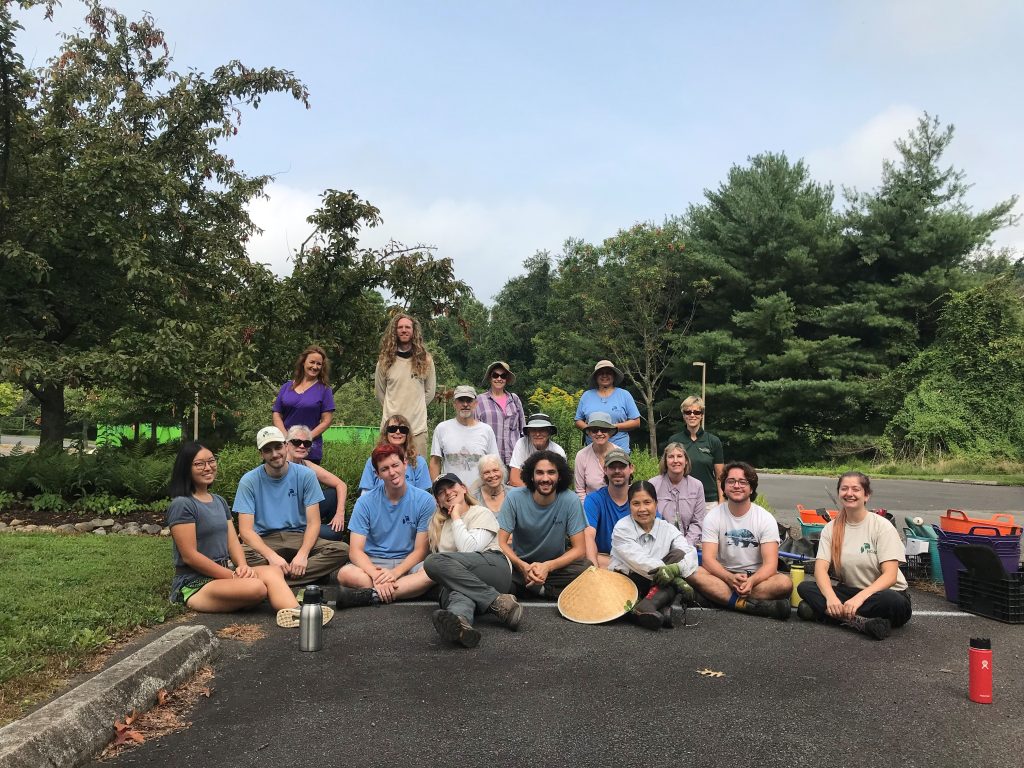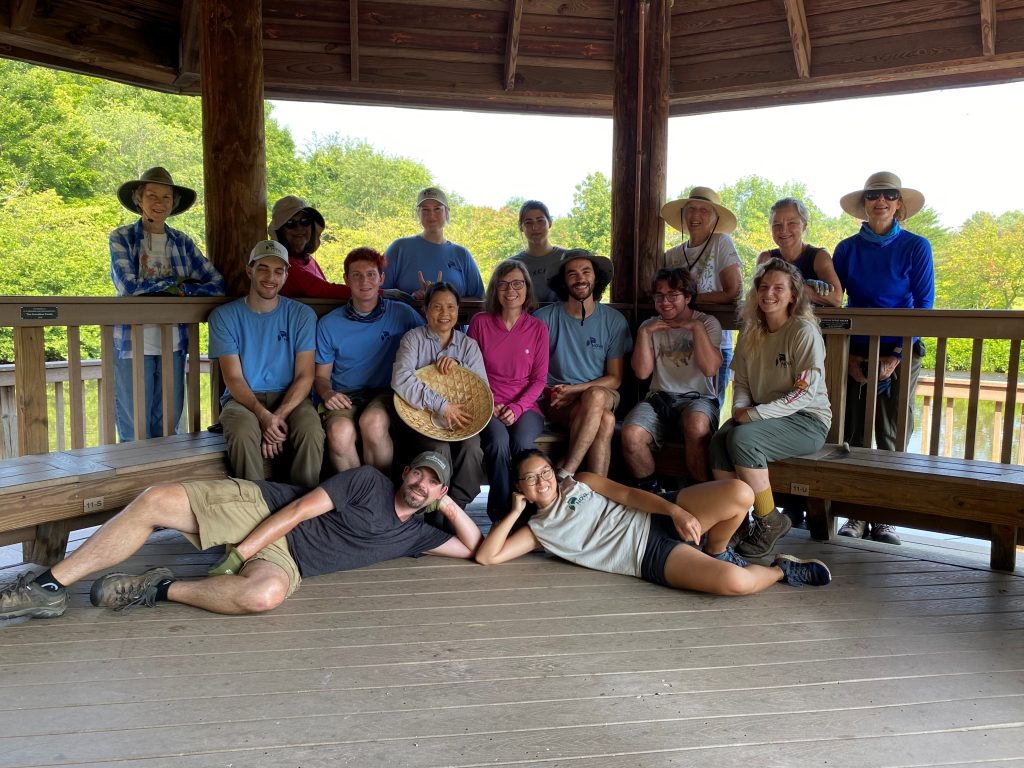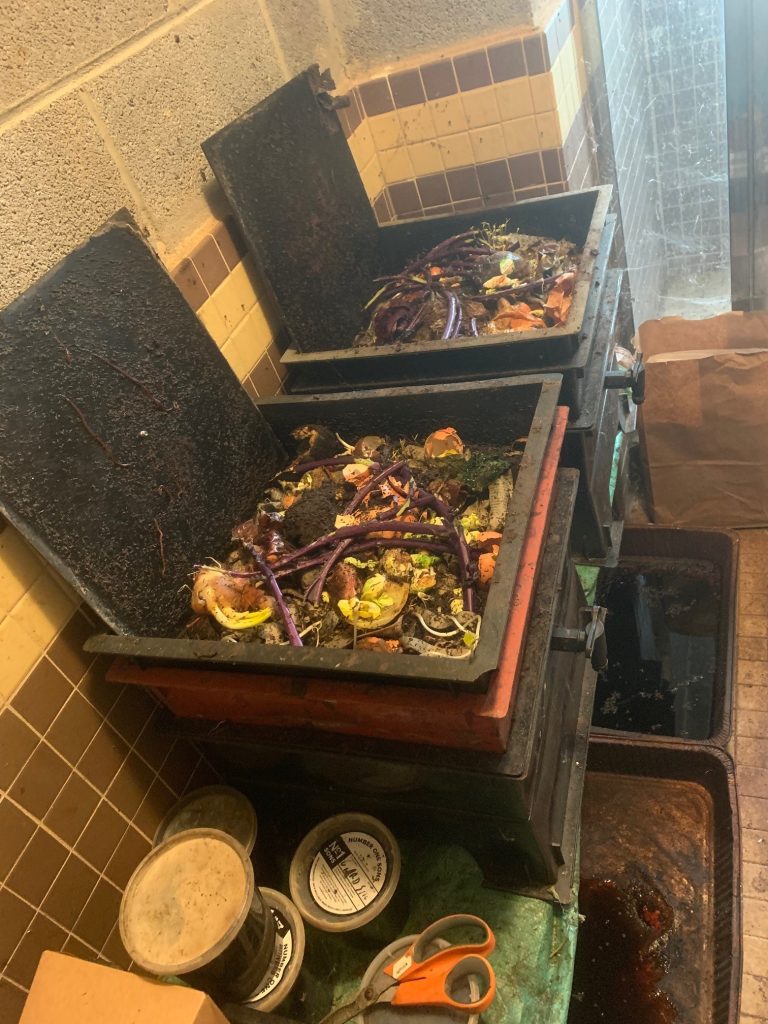Reducing your Pesticide and Fertilizer Use with Integrated Pest Management

Most non-organic pesticides and fertilizers are fossil fuel-based. These fertilizers pollute waterways, farmlands, and the surrounding local environment. Plus, they require energy to be produced and are a danger to human and animal health. Using integrated pest management, organic farming techniques, fossil-free pesticides and fertilizers, and hardy/native plants can significantly reduce chemical pollution.
We reached out to Charlie Bruce, Sara Do, and Chelsea Mahaffey of Meadowlark Botanical Gardens to talk about how they’ve reduced their pesticide and fertilizer use. Meadowlark Botanical Gardens is a 95-acre public garden under the NOVA Parks umbrella in densely populated Northern Virginia. Meadowlark takes immense pride in stewardship of the land, and aims to become a community hub where guests can learn about plants native to their region. Meadowlark’s Potomac Valley Collection highlights native plants based on the geography and flora of the Potomac River Basin spanning multiple states. Their native collection displays ways of reducing pesticides and fertilizers and serves as an educational example of limiting fossil-fuel derived products.
Can you tell us how you manage your outdoor and indoor pests and invasive plants?
We use limited pesticides, fertilizers, and herbicides focusing on the tenants of integrated pest management (IPM). IPM is an effective approach that incorporates physical, biological, cultural, or (as a last resort) chemical controls to manage pests and invasive species and boost plant growth. We focus on the long-term prevention of pests by monitoring and using corrective actions if needed. By limiting the amount of products we use, we noticed benefits including spending less on chemicals and the fees associated with them (storage, shipping, disposal), reduction of hazards on property, and decreased need for extreme protective equipment. These benefits make a safer workplace for the staff and help minimize our impact on the environment.


Instead of solely using conventional pesticides, our team performs IPM in our gardens and growing facilities. To start, our team held a discussion about insect thresholds. These may be visual indicators such as damage on plants due to insects, secondary infections due to insects (such as sooty mold) or number of pests visible on a plant. We also discussed the benefits of insects in the ecosystem, because if nothing is eating your plant, then it is not part of the ecosystem.
After discussing, we evaluated what insect pests were present in our growing facilities via sticky traps and other visual clues. We use organic pesticides with the active ingredients of potassium salts of fatty acids or horticultural vinegar-isopropyl alcohol-Safer-Soap. If there is an outbreak of insect pests, we halt applications and release appropriate biological predators for lowering pest numbers. We continue this regimen throughout the year with daily visual surveys and sticky trap inspections. Having the right plant in the right place has allowed us to limit spraying fungicides and insecticides. Outdoors, pests of concern are primarily mammalian nuisances. Mammals are deterred with a mix of deer sprays and application of hot pepper flakes.
How has research played a role in Meadowlark’s transition to IPM?

Individual research has been key in limiting the amount of fossil fuel derived pesticides. When we first started to reduce pesticides and fertilizers, we observed our plants and the surrounding environment. We asked questions such as, do all these plants need fertilizer? Do they all need the same nutrients? If we applied nutrients, where would the excess go? As part of the Chesapeake Bay Watershed and with three large lakes on property, we use extreme caution, favoring products that are beneficial for the plants and that limit the effect on the environment and aquatic wildlife. When researching potential products, we always read the label first to see what the active ingredients are. We weigh the pros and cons of applying harsh chemicals in the landscape, factoring in the safety of staff, guests, and the local ecosystem.
How do you replace fertilizer on your campus?
Every spring and fall, we apply healthy amounts of leaf mulch and compost into our gardens beds to limit the amount of fertilizer. Mulch used in the gardens is a mix of onsite and county compost. County compost is comprised of vegetative materials gathered through leaf and other green waste collection within the county. Leaf mulch is exactly what it sounds like: fallen leaves collected from the property and given the time to decompose for a year. It is created onsite – reducing fossil fuel emissions created by transportation. We also have multiple, small-scale vermiculture bins for our staff’s kitchen scraps and paper waste. These indoor worm composting bins provide nutrient rich fertilizer which we use to start seeds and other smaller tasks in our growing area.


While we have not found a substitute for pelleted, slow-release fertilizer in our growing areas, throughout the gardens compost is used as fertilizer. Compost, derived from plant matter from the gardens including weeds, annuals, and other herbaceous material, helps further reduce emissions. We can utilize materials from our gardens to make soil conditioner rather than disposing offsite. This also reduces our need for pesticide applications overall. Incorporating IPM techniques, proper horticultural techniques, and appropriate plant placement has been pivotal to reduce our use of fossil-fuel driven pesticides and fertilizers.
Does Meadowlark use Roundup on campus and if not, how do you manage weeds?
We don’t use Roundup on our campus. Since most of our trails are asphalt (a whole conversation happening about that), we don’t have too many weeds that grow in the cracks. We hand pull weeds in the sidewalks/cracks in the asphalt a couple times of year, but overall don’t find a need for it. We’ve talked about ‘organic’ substitutes like vinegar, but have not gone that route yet.
Where can institutions start reducing their fossil-fuel derived pesticides and fertilizers?
For institutions evaluating where they can reduce the use of fossil-fueled derived pesticides and fertilizers, look at your current fertilizing and pest control regimen. Question your practices: Where can I replace insecticide application with biological control methods? Am I applying fungicides because this plant is planted in undesirable conditions? Can we use compost to replace chemical fertilizer in the field?Can we recycle certain plant materials onsite? Start small and research the products you are currently using. Find substitutes if you can and look for minor changes to make to your routine. Change does not happen overnight, and the subtle changes now can help lessen our impact on the ecosystem in the future.







Recent Comments